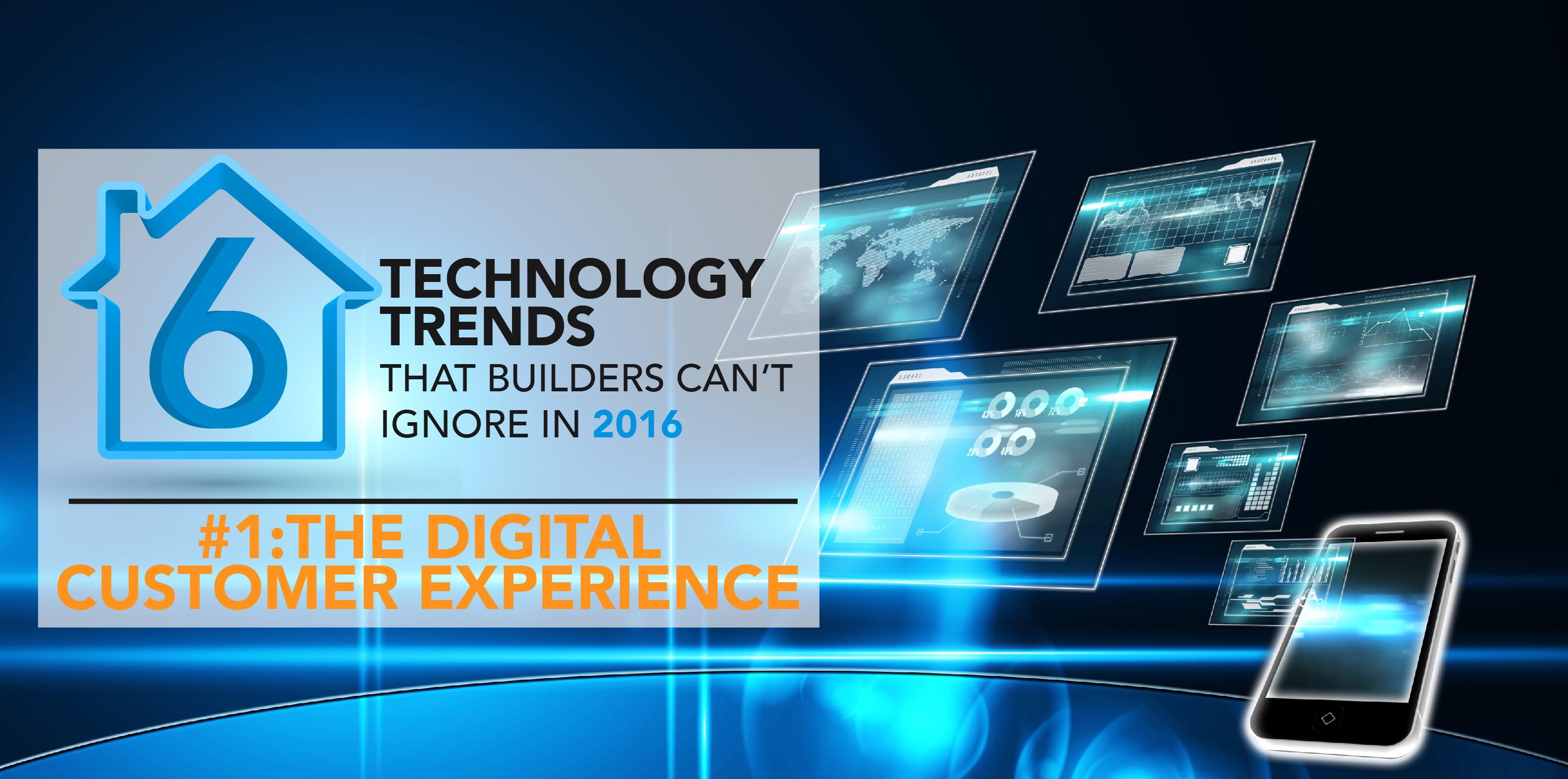Part 1 in our Series: 6 Technology Trends Builders Can’t Ignore in 2016
A convergence of digital and online technologies is beginning to profoundly transform our industry. Six technology trends in particular will revolutionize homebuilding, from marketing and sales to design and construction. What we do with these technologies will enhance buyers’ perceptions of our brand and engagement with our people, as well as their lifestyles, comfort, and security when they move into our homes and communities. The next generation of homebuyers expects us to embrace the promises of these six technologies as they do, and will reward our innovation with loyalty and brand advocacy. The first post in the series focuses on the Digital Customer Experience.
_____________________________________________________________________________
Creating a comprehensive digital customer experience requires measuring and improving the experience at every customer touch point: marketing, sales, construction, field, and warranty. It’s about being everywhere your customer expects you to be – on every device, through every sales channel – in order to improve engagement, satisfaction, and loyalty.
Research proves that delivering a superior customer experience in the digital age is critical to your success:
- By 2017, 89% of executives expect the customer experience to be the prime basis for competition. [Tweet This] Gartner, 2014
- “Digitally mature” companies have significantly better business performance. MIT & Capgemini Consulting
- Just 5% of companies say they do digital well enough to make it a competitive advantage. Forrester, 2015
- Companies can use digital customer care to boost satisfaction by 33%. McKinsey, 2015
The digital customer experience is the accumulation of seamless interactions across the customer’s journey that adds up to a best-in-class reputation for those that deliver it. Reaching payoff requires substantial investments in marketing strategies, technologies, mobile apps, and services.
CEOs may be reluctant to embrace digital, especially when customer service scores are currently satisfactory or better. Potential incremental gains are lower, with a lower possible return on investment. This scenario is highly prevalent in our industry, and leaves good builders vulnerable to those delivering poorer service, but with the capital to turn things around. In any case, providing projections on near-term returns may be difficult, but the macro-economic case is compelling.
Why invest heavily in a digital customer experience?
According to Forrester Research’s 2007-2014 Customer Experience Index studies, the top ten customer experience leaders generated a total return over this seven-year period of 77.7%. [Tweet This] The S&P 500 Index generated a 51.5% total return during that period. On the other hand, the bottom ten customer experience laggards generated a paltry -2.5% return. To underline this finding, in one of America’s strongest bull market runs, companies offering the worst customer service experienced negative returns.
Digital experience benefits work their way to the bottom line, beginning with improved retention, repeat business, and referrals. Customers are less price sensitive in the models they choose and are more trusting in your ability to make added options smart long-term investments. Customers are happier, marketing costs are lowered as word-of-mouth generates more leads, and your expenses associated with detractors and PR crises are reduced. All of this can result in dramatic revenue growth and higher margins.
Begin with a consistent customer service ethos.
The first step in this process is to review your customers’ experiences along their journey from home shopping to warranty repairs. Train all of your front-line personnel to be willing to see issues from the customer’s perspective and make sure they are committed to delivering on expectations. They must value honesty, integrity, and fairness, and they must behave consistently, so that the customer recognizes your organization’s customer service ethos in each interaction.
Deliver a seamless communication experience.
Once a commitment to customer service values is in place, you can begin formulating your messaging for every step in the sales cycle. Marketing messaging, as well as how you listen and respond to customers, your corporate objectives, graphic design, and application functions must be standardized across communication channels. If you’re where most builders are in this process today, you will be evolving from multi-channel leveraging of several channels and devices, to Omni-channel integration of a personalized, consistent experience across all channels and devices. Start slowly and methodically, standardizing your current channels and devices before integrating new ones.
Best-of-breed businesses use data segmentation and marketing automation to perfect the experience, [Tweet This] delivering tailored messaging automatically to each distinct buyer persona. Work your way up to this summit by planning how to capture prospect data in a consistent manner across channels and devices.
Your journey toward creating a satisfying digital experience for your customers will be one of the most rewarding experiences you have in your career. We can help you make it a success. If you would like to learn more about how to get started, email BDX today or call us 1-866-651-8866.

